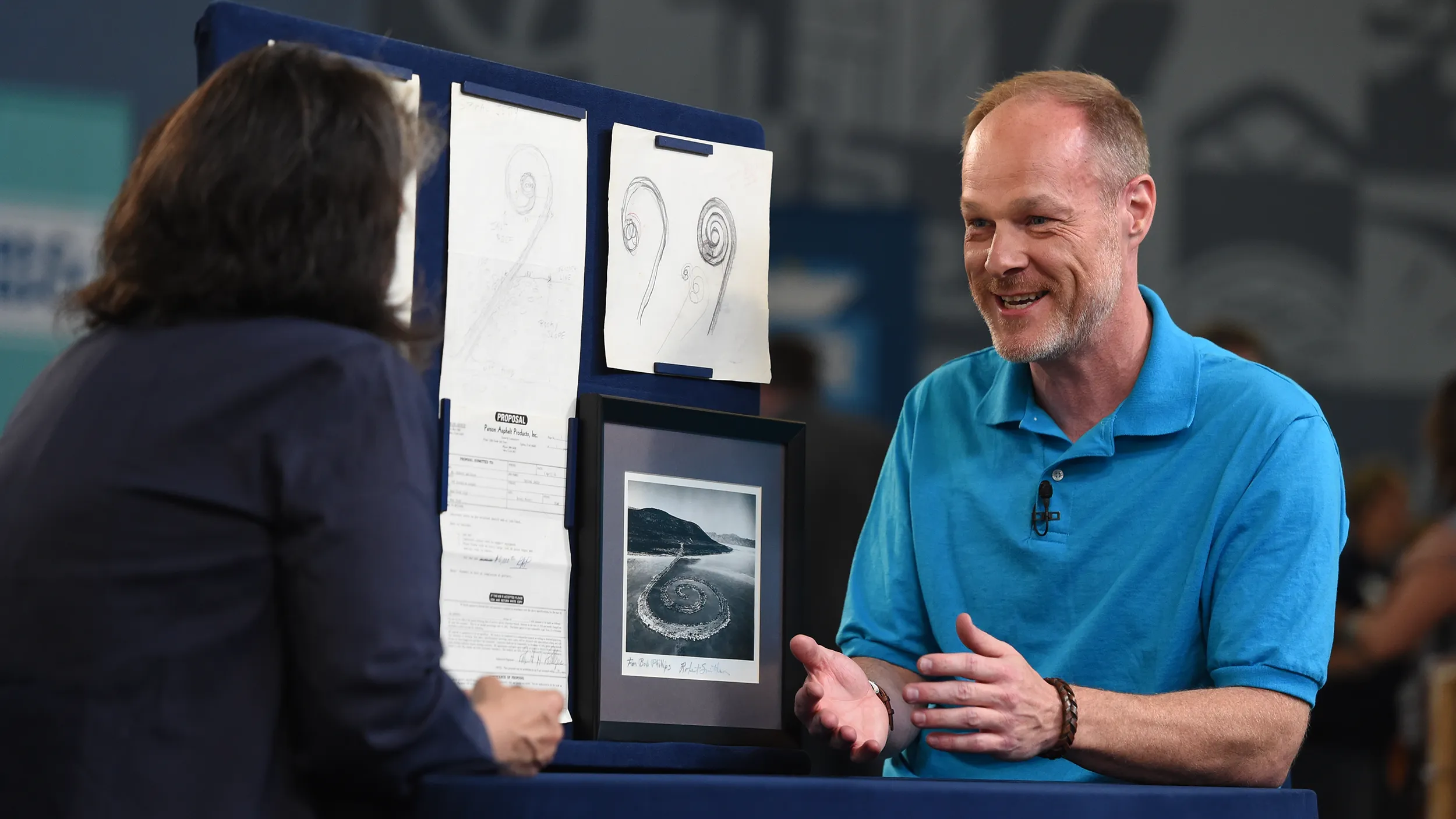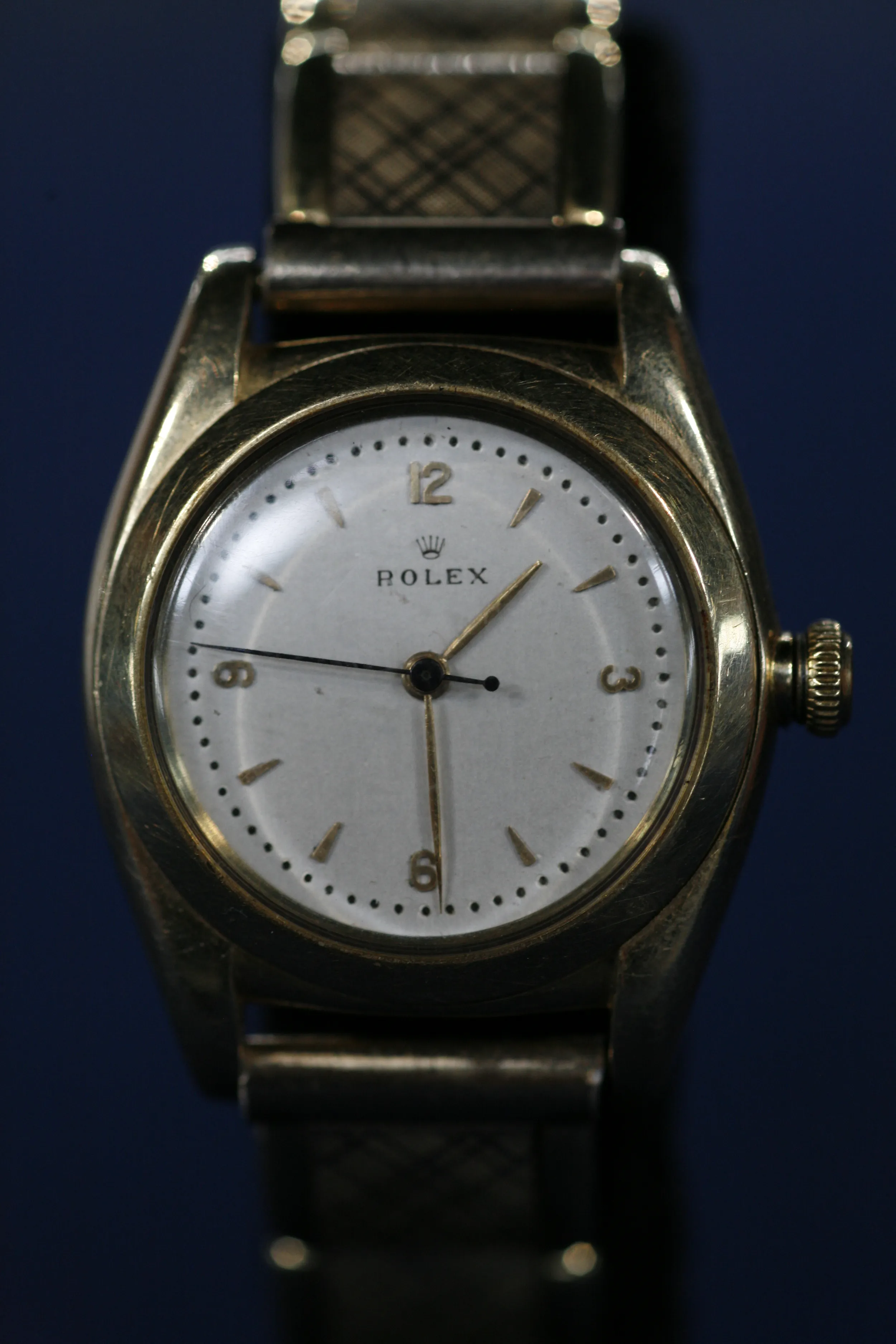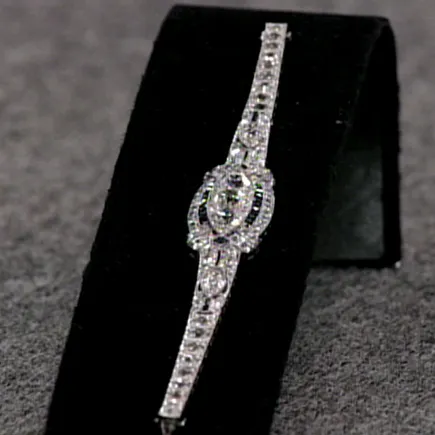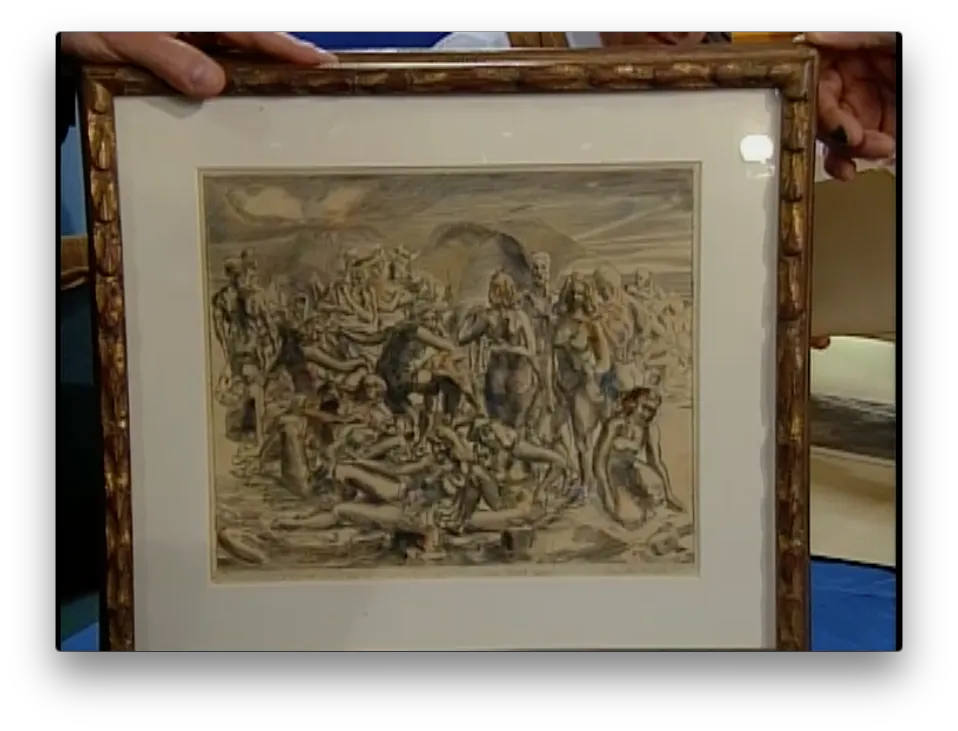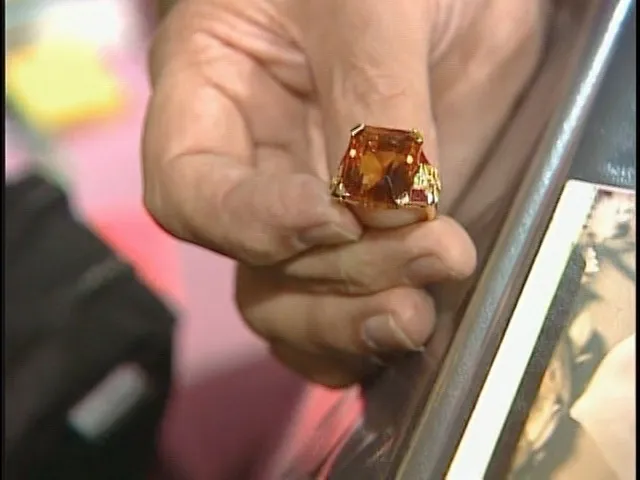GUEST: When I was first married, which was about 100 years ago, I moved into an older neighborhood and became best friends with a woman who lived on that street. Her family owned a very prominent furniture shop here in Salt Lake, a furniture store. And I've always assumed this piece came from that store. It was in her home, and when she died, none of her children wanted it. And so they asked me if I would like it, and I have had it for the last 23 years.
APPRAISER: Wonderful. What's really interesting about it is that stylistically when you look at it, the original design would have dated it as being Federal, from the Federal period, about 1790. But this piece was actually made in Grand Rapids, Michigan, in about 1945 to 1950.
GUEST: Oh.
APPRAISER: And it was made by a company called the Irwin Furniture Company. And we know that because there's actually a little tab on the inside, right in here, on the drawer. And it says "Irwin." And that was a furniture company based in Grand Rapids, Michigan. Was in business from about 1919 to 1953. So one of the reasons we can tell that it is not from the Federal period is the way it's constructed. When we open it, we can see the lock is inset.
GUEST: Yes.
APPRAISER: Which makes it thoroughly 20th century.
GUEST: Uh-huh.
APPRAISER: Also, on the front right here, this is this wonderful flame veneer. But you see that it's sort of... there's a little sort of cracking and lifting to the surface a little bit.
GUEST: Mm-hmm.
APPRAISER: That's because the veneer has been machine-cut-- very, very thin. Quite literally paper thin.
GUEST: Oh, really?
APPRAISER: As opposed to an older piece that would have been hand cut, and not quite as thin. So as such, there's some shrinkage. It's sort of separating slightly. So we can see that. And I think that many viewers who watch the show will take a closer look at pieces of furniture in their own dining rooms to see if they can figure out whether it's a wonderful 20th century reproduction, or if it's an 18th century piece as well. If you were to see it in an antique store today, I would expect you to pay around about $1,500 for it.
GUEST: Oh, okay. All right.
APPRAISER: If it were 18th century, the value probably in the store would probably be about $5,000 or $6,000 in a retail environment. So there's not a considerable difference, and that's really just a product of the market today.
GUEST: Mm-hmm.

